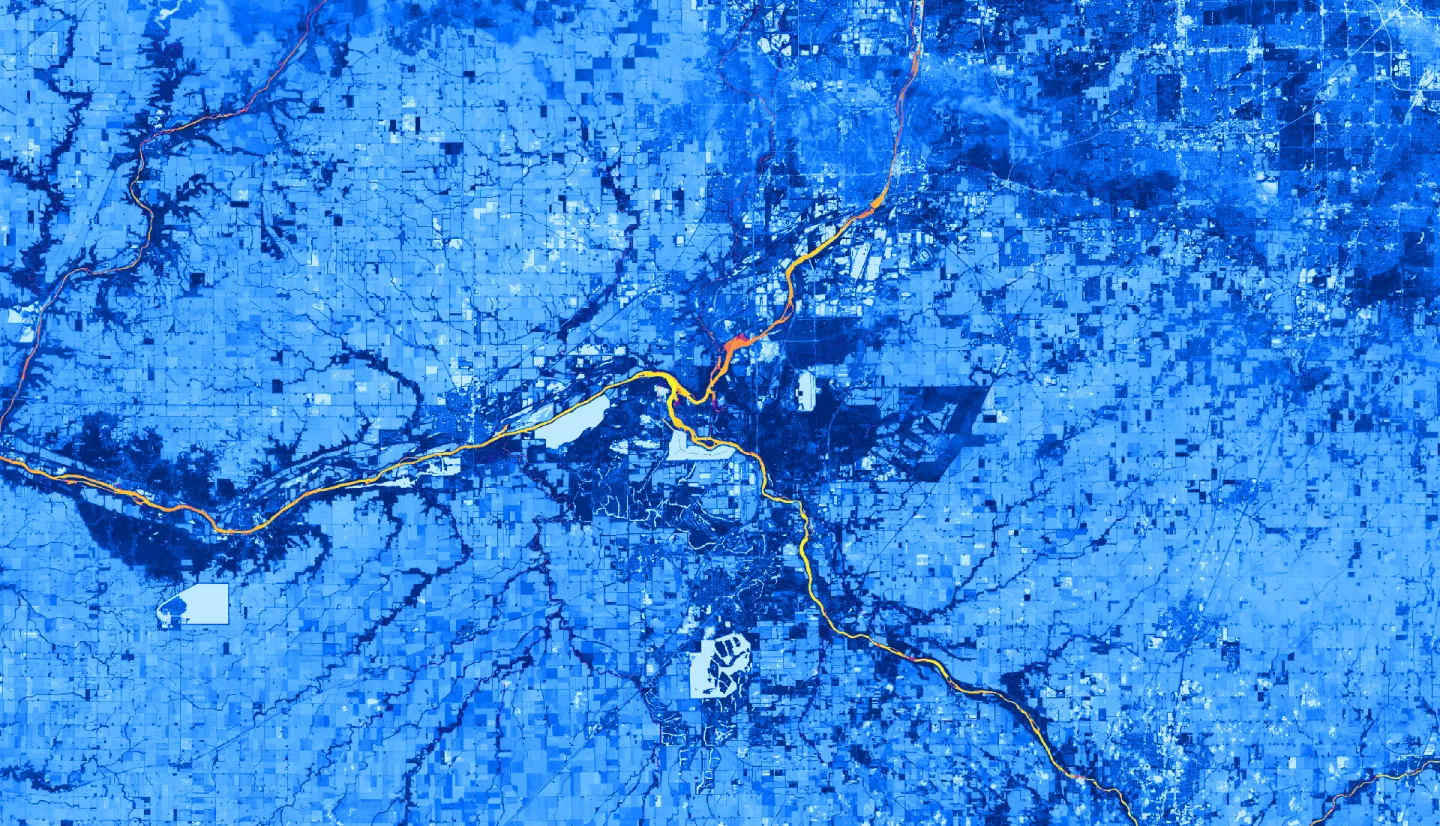Kankakee Water Resources (Summer 2023)
Team: Marisa Smedsrud (Project Lead); Hayden Hoffmeister; Oluwatosin Orimolade; Barira Rashid
Summary: In recent years, unpredictable grassing events have occurred at the Dresden Generating Station, located on the Kankakee River in northern Illinois. Grassing events are characterized by large mats of aquatic vegetation that accumulate downstream, resulting in the clogging of water intake structures and leading to major disruptions in power generation. Currently, employees at the Dresden Generating Station are responsible for reactively responding to each grassing event individually. This project, in partnership with Constellation Nuclear and the United States Geological Survey (USGS), assessed the feasibility of using Earth observations (Landsat 9 OLI2, Landsat 8 OLI, Sentinel-2 MSI, PlanetScope DOVE, WorldView-3, and GPM IMERG) to detect floating aquatic vegetation within the Kankakee River and identify predictive factors that trigger grassing events, as doing so will provide the Dresden Generating Station the ability to anticipate future grassing events and enhance general hydrologic modeling efforts held by the USGS. The results of this study illustrated that, while aquatic vegetation can be detected by satellites with up to moderate spatial resolution (30 m), temporal resolution is a major limiting factor for tracking movements in floating aquatic vegetation and identifying predictive measures for these events. In addition, correlation results suggest a possible negative relationship between grassing events and river discharge (-0.875). In the future, pairing these results with ground control surveys and sensors with higher temporal capabilities would allow our project partners to predict and proactively address future grassing events, ensuring the reliable operation of the Dresden Generating Station.



